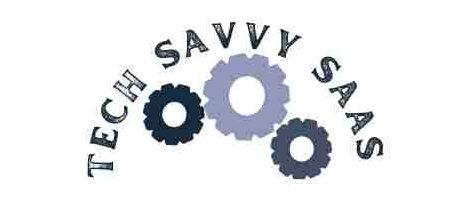In today’s digital age, cloud computing stands as the cornerstone of technological innovation, reshaping the way businesses operate and interact with technology. As we navigate through the vast expanse of the digital landscape, understanding the nuances of cloud computing becomes paramount. “The Cloud Chronicles: Navigating Cloud Computing Trends” embarks on a journey to unravel the complexities and opportunities within this dynamic realm, shedding light on its profound impact on businesses and technology alike.

Cloud computing
At its core, cloud computing refers to the delivery of computing services—such as storage, processing power, and applications—over the internet, instead of relying on local hardware or infrastructure. This transformative technology offers unparalleled flexibility and scalability, empowering businesses to scale their operations seamlessly. For instance, businesses across various industries, from startups to multinational corporations, harness cloud computing to efficiently manage their data, streamline operations, and drive innovation. Take, for example, the case of Netflix, which leverages cloud services to deliver seamless streaming experiences to millions of subscribers worldwide, adapting to fluctuating demand with ease.
Moreover, cloud computing enables businesses to access a wealth of resources on-demand without the need for substantial upfront investment in hardware or infrastructure. This accessibility is exemplified by cloud service providers like Amazon Web Services (AWS), Microsoft Azure, and Google Cloud Platform, which offer a diverse array of services tailored to meet the evolving needs of organizations across different sectors. For instance, AWS provides a wide range of cloud-based services, including storage, computing power, database management, and artificial intelligence capabilities, allowing businesses to innovate and scale rapidly.
Furthermore, cloud computing facilitates collaboration and innovation by breaking down geographical barriers and fostering a culture of digital transformation. As cloud technology continues to evolve, businesses are embracing advanced capabilities such as artificial intelligence (AI) and machine learning (ML) to gain valuable insights from their data and drive informed decision-making. For example, companies like Spotify utilize cloud solutions to analyze user behavior and preferences, deliver personalized recommendations, and enhance the user experience.
Key Trends in Cloud Computing
1. Multi-cloud Adoption: Are Organizations Embracing Multiple Cloud Service Providers for Flexibility and Performance?
In recent years, there has been a noticeable shift towards multi-cloud adoption among organizations seeking to diversify their cloud strategies and optimize performance. Studies show that approximately 93% of enterprises have adopted a multi-cloud strategy, utilizing services from two or more cloud providers to meet their diverse needs (Flexera State of the Cloud Report, 2021). This trend reflects the growing recognition among businesses that relying on a single cloud provider may introduce risks such as vendor lock-in and potential service disruptions. For instance, companies like Spotify and Airbnb have adopted a multi-cloud approach, leveraging services from AWS, Google Cloud, and other providers to mitigate risks and maximize flexibility.
2. Edge Computing: How is Edge Computing Reshaping Data Processing and Analysis?
The advent of edge computing marks a significant evolution in the way data is processed and analyzed, particularly in latency-sensitive applications such as IoT devices and real-time analytics. Edge computing involves moving data processing closer to the source of data generation, reducing latency, and improving performance for critical applications. Research indicates that the global edge computing market is projected to reach $43.4 billion by 2027, driven by increasing demand for low-latency processing and real-time insights (Grand View Research). Major players in various industries, including manufacturing, healthcare, and telecommunications, are leveraging edge computing to support applications such as predictive maintenance and autonomous vehicles.
3. Serverless Computing: Are Serverless Architectures Transforming Development Processes?
Serverless computing, characterized by the abstraction of server management and infrastructure, has emerged as a game-changer in software development, enabling developers to focus on building and deploying applications without worrying about server provisioning or scalability. Studies indicate that serverless adoption is on the rise, with nearly 50% of organizations planning to increase their usage of serverless technologies in the coming year (O’Reilly Serverless Adoption Report, 2021). Companies like Netflix and Airbnb have embraced serverless architectures to improve development efficiency and reduce operational overhead. By leveraging serverless platforms such as AWS Lambda and Azure Functions, businesses can achieve unparalleled flexibility and scalability, paying only for the resources consumed during runtime.
Challenges and opportunities
Navigating the realm of cloud adoption presents organizations with a myriad of challenges and opportunities. While the benefits of cloud computing are undeniable, businesses must address various obstacles to maximize its potential and mitigate risks.
1. Security Concerns: How Are Organizations Mitigating Risks in the Cloud?
Security remains a top concern for organizations transitioning to the cloud, with data breaches and cyber attacks posing significant threats to sensitive data. Research indicates that approximately 68% of organizations cite security as their top challenge in cloud adoption (IDC CloudPath Survey). To address these concerns, businesses are investing in robust cloud security measures such as encryption, access control, and threat detection systems. For example, financial institutions like JP Morgan Chase and Capital One have implemented advanced security protocols to safeguard customer data in the cloud, leveraging technologies such as data encryption and multi-factor authentication.
2. Regulatory Compliance: How Are Businesses Ensuring Compliance in the Cloud?
Ensuring regulatory compliance is another critical challenge for organizations operating in highly regulated industries such as healthcare and finance. With regulations such as GDPR and HIPAA governing the handling of sensitive data, businesses must adhere to strict compliance standards to avoid penalties and legal ramifications. Studies show that approximately 56% of organizations struggle with regulatory compliance in the cloud (Flexera State of the Cloud Report, 2021). To address this challenge, businesses are leveraging cloud compliance tools and services to automate compliance management and ensure adherence to regulatory requirements. For instance, healthcare providers like Mayo Clinic and Cleveland Clinic are utilizing cloud compliance platforms to streamline HIPAA compliance and protect patient privacy.
3. Infrastructure Management: How are organizations optimizing cloud environments?
Managing cloud environments can be complex and challenging, requiring organizations to efficiently allocate resources, optimize performance, and minimize costs. Research indicates that approximately 53% of organizations struggle with cloud management and optimization (Flexera State of the Cloud Report, 2021). To address these challenges, businesses are adopting cloud management platforms and tools to gain visibility into their cloud infrastructure and streamline operations. For example, technology giants like Google and Microsoft offer cloud management solutions such as Google Cloud Console and Azure Management Portal, enabling organizations to monitor performance, automate tasks, and optimize resource utilization.
Case Studies
Delving into real-world examples, we uncover success stories of organizations that have effectively navigated cloud computing trends, overcoming challenges and seizing opportunities to drive innovation and growth.
1. Netflix: Scaling Seamlessly with Multi-Cloud Adoption
One exemplary case of multi-cloud adoption is Netflix, the global streaming giant. Facing the challenge of scaling its infrastructure to accommodate millions of viewers worldwide, Netflix embraced a multi-cloud strategy, leveraging services from AWS, Google Cloud, and Azure. By distributing its workload across multiple cloud providers, Netflix ensures redundancy and resilience, minimizing the risk of downtime and service disruptions. This approach enables Netflix to seamlessly handle spikes in demand, such as during the release of highly anticipated shows or movies. As a result, Netflix maintains its reputation for delivering uninterrupted streaming experiences to its vast subscriber base, with over 200 million paid memberships worldwide (Netflix Q1 2021 Earnings Report).
2. Airbnb: Enhancing Flexibility with Serverless Computing
Another compelling case study is Airbnb, the popular online marketplace for lodging and travel experiences. Faced with the challenge of optimizing its development workflows and reducing infrastructure management overhead, Airbnb adopted a serverless architecture for its platform. By leveraging services like AWS Lambda and API Gateway, Airbnb’s developers can focus on building and deploying code without worrying about server provisioning or scalability. This serverless approach allows Airbnb to adapt quickly to changing business needs and scale its operations efficiently. For example, during peak booking seasons or promotional events, Airbnb can handle surges in traffic without manual intervention, ensuring a seamless user experience for millions of guests and hosts worldwide.
3. Mayo Clinic: Ensuring Compliance with Cloud Governance
A notable case study in cloud compliance is the Mayo Clinic, a renowned healthcare organization. With stringent regulations such as HIPAA governing the handling of patient data, Mayo Clinic faced the challenge of ensuring compliance while leveraging the benefits of the cloud. To address this challenge, Mayo Clinic implemented a comprehensive cloud governance framework, incorporating policies, procedures, and automated controls to safeguard patient privacy and meet regulatory requirements. By leveraging cloud compliance tools and services, Mayo Clinic can securely store and transmit sensitive healthcare data in the cloud, enabling clinicians to access critical information anytime and anywhere. This approach enhances patient care while ensuring compliance with regulatory mandates, reinforcing Mayo Clinic’s reputation as a leader in healthcare innovation.
Key Takeaway:
- Stay Informed: Keep abreast of emerging cloud computing trends and innovations to remain competitive in the digital landscape.
- Embrace Innovation: Don’t shy away from adopting new technologies such as multi-cloud strategies, edge computing, and serverless architectures to drive business growth.
- Be Flexible: Adapt to changing business needs and technological advancements by embracing the flexibility offered by cloud technologies.
- Prioritize Security: Invest in robust cloud security measures and compliance frameworks to protect sensitive data and mitigate risks.
- Optimize Operations: Streamline cloud management and infrastructure to maximize efficiency and minimize costs.
Conclusion
In conclusion, “The Cloud Chronicles: Navigating Cloud Computing Trends” serves as a comprehensive guide for businesses seeking to navigate the complexities of cloud computing. By understanding the key trends, challenges, and opportunities in the cloud landscape, organizations can make informed decisions and harness the full potential of cloud technologies to drive innovation and success in the digital age.
More Post
- How Tech Visionaries Shape the Digital Future ?Redefining Technology and Industry Standards
- How SaaS Solutions Drive Business Growth? Key Benefits for Modern Businesses
- How Developers are Driving Innovation with AI, Blockchain, IoT, and Cloud Computing
- How AR, AI, and MR are Transforming Reality: The Quantum Leap in Tech Trends
- Tech Wonderland: A Journey Through Future Possibilities






